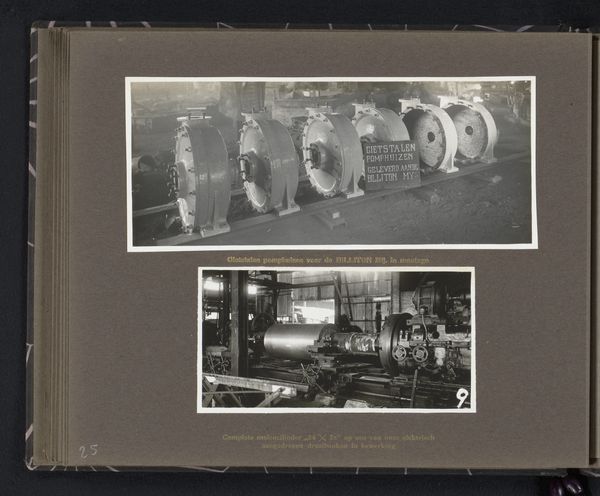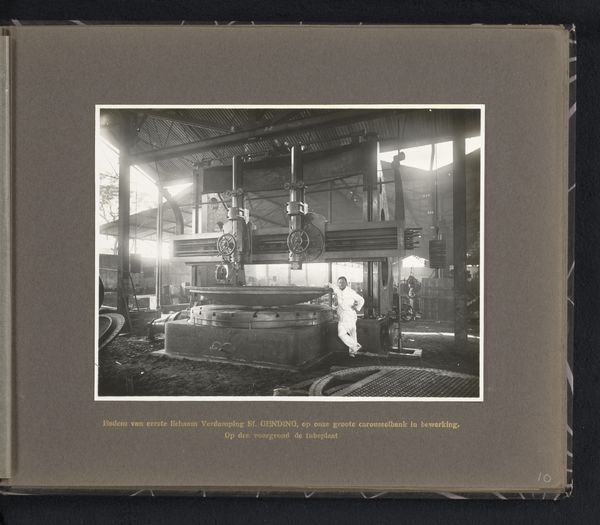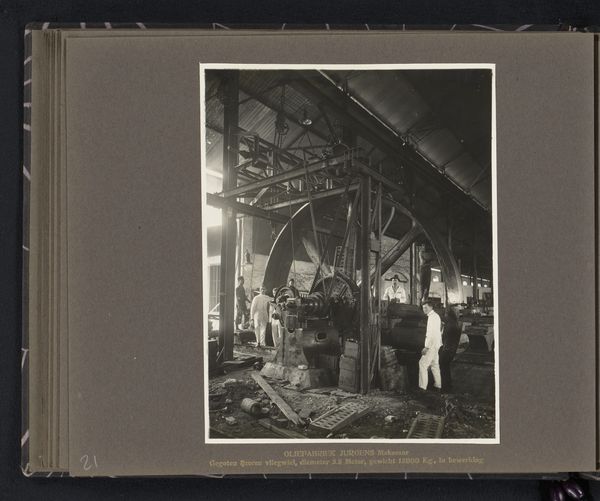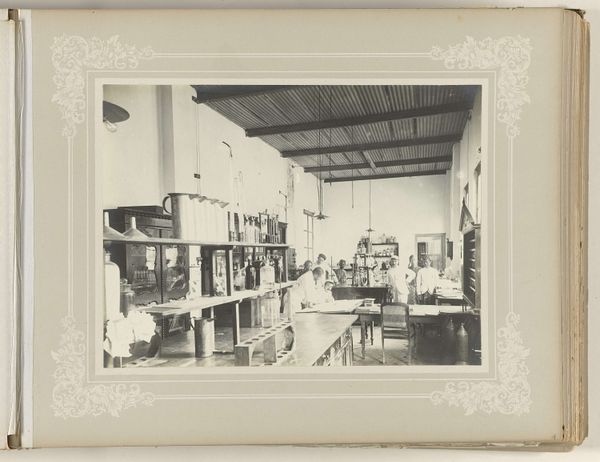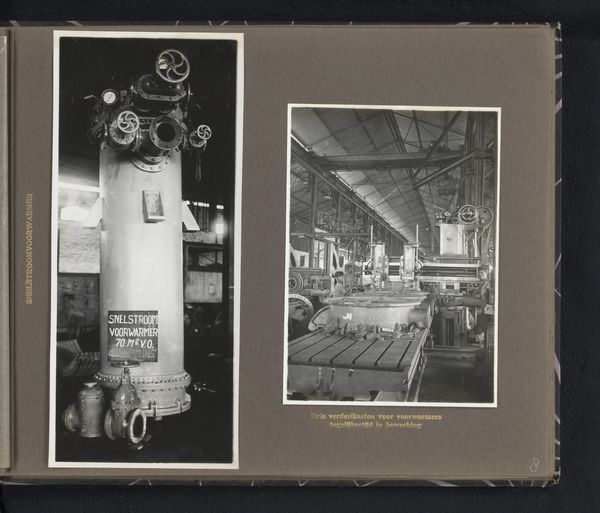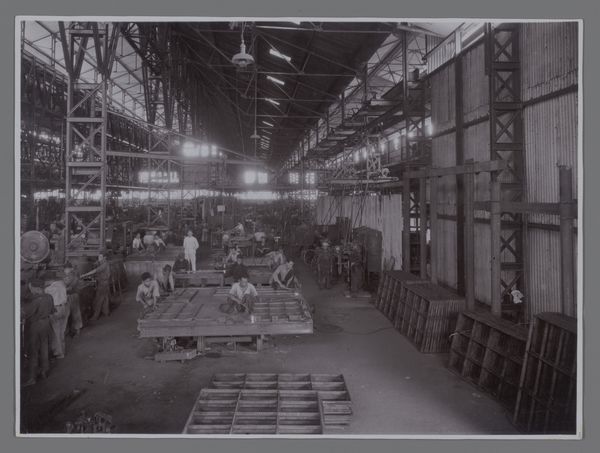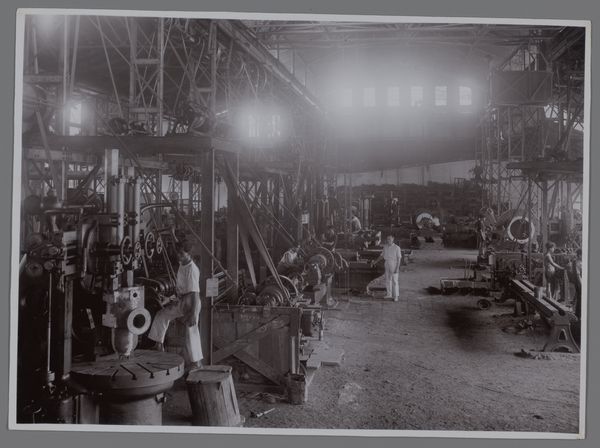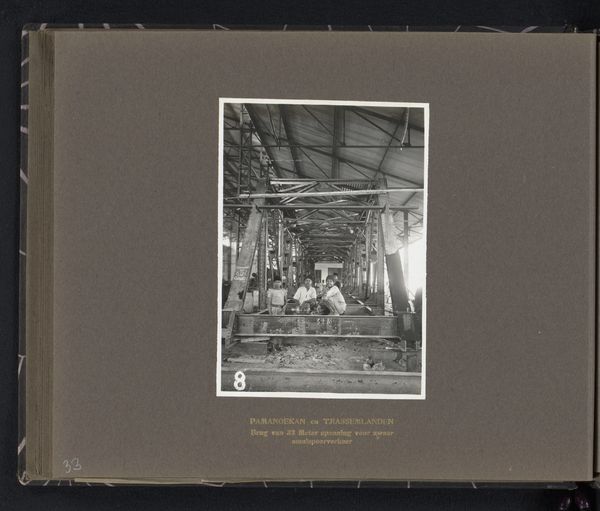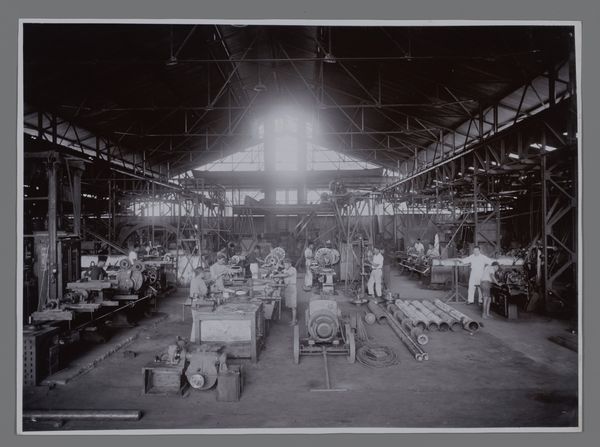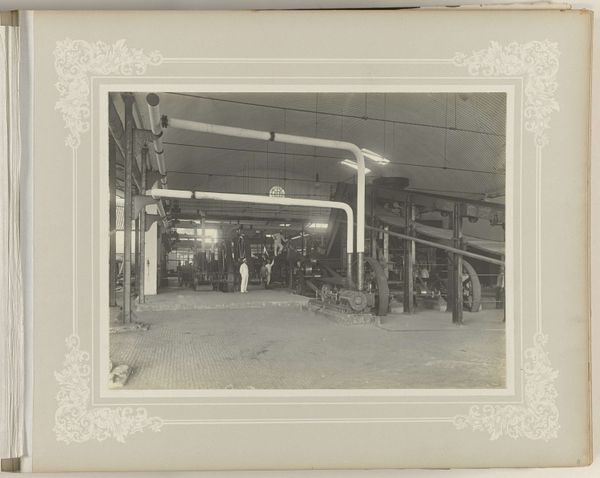
print, photography
# print
#
sculpture
#
photography
#
modernism
#
realism
Dimensions: height 157 mm, width 208 mm, height 240 mm, width 290 mm
Copyright: Rijks Museum: Open Domain
Curator: The photograph we are looking at, simply titled "Centrifugaalpompen voor Bankatinwinning in bewerking," depicts, as the title indicates, Centrifugal pumps for tin mining in processing, and dates from sometime between 1916 and 1924. Editor: It's striking how the photograph seems to capture a sense of raw, industrial power frozen in time. There’s a somber atmosphere, and the machines themselves seem to take on almost monumental presences with symbolic implications far beyond just tools. Curator: Exactly. Tin mining on Bangka Island during this period reflects a complex intersection of colonial exploitation, technological advancement, and human labor. The very act of extracting these materials reshaped not just the land, but the social fabric, impacting lives, economies, and power structures that remain salient today. Editor: Absolutely. Looking at the arrangement of the pumps, the pipes leading away into a larger factory, creates visual rhythm, a progression of circles, almost like spiritual mandalas representing some lost or hidden god. The symmetry in the pipes leading up could mean technological and social progress, but from what or toward what goal? Curator: I’d suggest those visual rhythms reinforce the systematized nature of industry itself. And yes, who ultimately benefits from these rhythms is a pertinent question. It forces us to acknowledge and reflect upon labor conditions and their ethical dimensions within such industries during this historical period. The modernism style is starkly in conflict with realist elements that give texture and volume to each part shown, it asks who this era truly served. Editor: The contrast between these very clean looking parts of the mechanism, and the overall disarray shown on the floor could indicate a transition from craftsmanship to machine made efficiency; an industrial god demands an altar, but this industrial one, at least from this moment caught in time, seems to have demanded it's surrounding chaos instead. Curator: Thinking about colonial history, these pumps may act as visual shorthand. We see in this photo only industrial innovation, but it speaks of more extensive power dynamics related to the environmental degradation and its profound cultural transformations. Editor: Yes, that industrial god demands its price, and perhaps, it always will. Looking at the lines and seeing how the pipes repeat in rhythm and pattern leads one to contemplate the inevitable repetition of social injustice throughout time itself. It remains a haunting reminder of our continued industrial legacy.
Comments
No comments
Be the first to comment and join the conversation on the ultimate creative platform.
